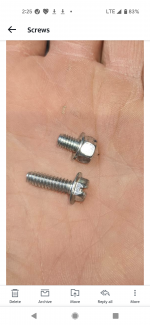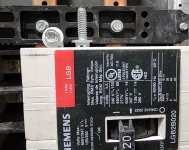electrofelon
Senior Member
- Location
- Cherry Valley NY, Seattle, WA
- Occupation
- Electrician
Got a 400A P3 and 600A P4 several months ago. Getting close to finishing the installation. They had different breaker to bus screws then I am used to. I wonder if that's a mess up or a supply chain substitution? Think I should ask / complain? I don't like having two different types of bus screws in the same building.


